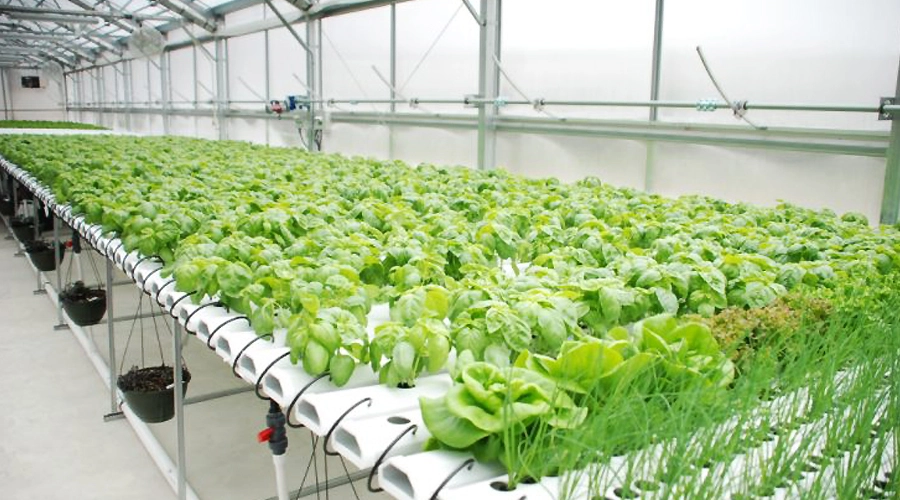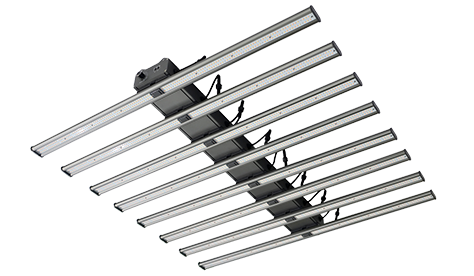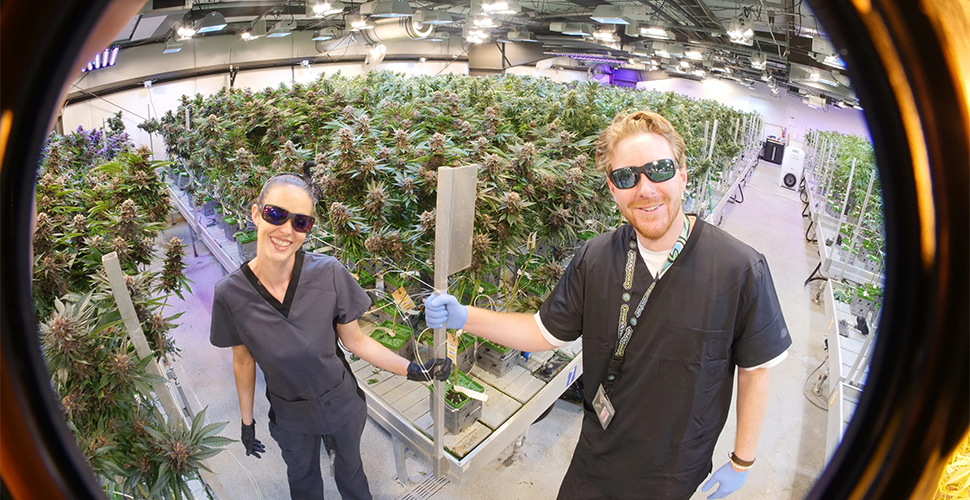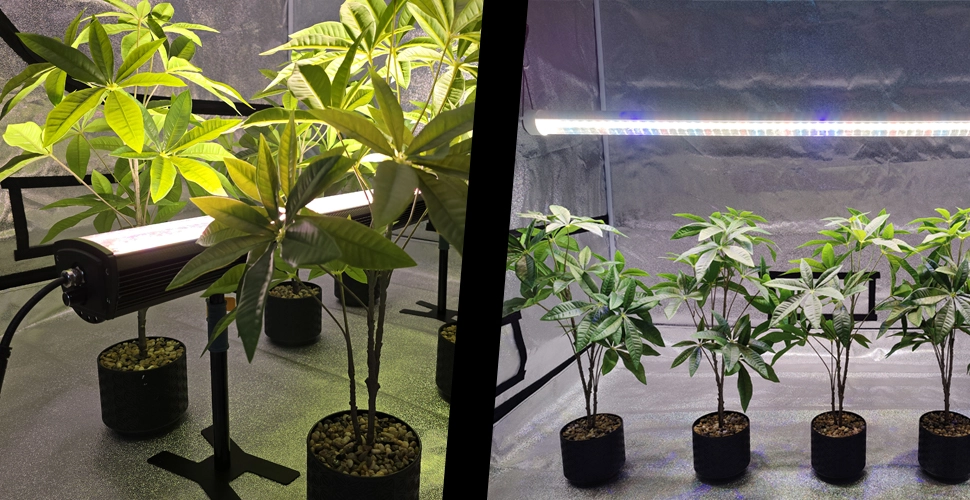Whether growers use NFT technology, DWC hydroponic systems, or aeroponic systems, once you’ve set up your hydroponic system, you should take good care of it.
Hydroponic system maintenance may seem daunting, but don’t worry – When you have a good grasp of the fundamentals, all other things become much easier.
Here, we’ll explore what hydroponic agriculture requires for monitoring so that you can keep the system clean and your plants content.
The Things You Need to Record
- pH Level
- EC Readings
- Water Changes
- Water Quality
- Lighting and Photoperiod
- Temperatura
- Oxygen Levels
- Nutrient Additions
- Disease and Pest Monitoring
- Regular System Cleaning
It might seem like a lot, but it’s easier than it sounds. It’s best to keep a log of each task you perform while monitoring and maintaining your hydroponic system.
Monitor pH and EC
The first thing to discuss is the pH value and EC readings.
It is important to monitor the nutrient solution frequently, especially when your system is new, to ensure the correct balance of essential nutrients for plant growth. Monitor the pH levels to maintain the optimal range for nutrient absorption.
Measure the EC of the nutrient solution to determine its overall nutrient concentration and adjust the EC levels based on the plant’s growth stage.
In Sistemas DWC, a significant amount of water is typically used, and compared to NFT systems, factors such as water temperature, pH levels, fertilizer strength, and overall nutrient concentration tend to remain relatively stable over time.
In DWC, these parameters don’t undergo significant changes on an hourly basis. There might be subtle variations daily and more changes every week. It doesn’t require as frequent monitoring for continuous or constant adjustments as NFT systems do.
Initially, test your nutrient solution at least once or multiple times daily. As your system matures, you’ll gain a better sense and can reduce the testing frequency.
When taking action in DWC systems, such as adjusting fertilizer strength weekly or pH values every day or every two to three days, it’s a more manageable task compared to the continuous monitoring required by NFT systems.
At times, nutrient management in NFT systems requires daily pH management. Monitoring is particularly crucial in the early stages of growth, whether in the deep-water zone or NFT systems.
Smaller hydroponic systems will need more frequent testing because any added nutrients or evaporated water can affect your EC and pH values more noticeably.
Seedlings need a good start, as growers can never recover that growth. Starting with poor-quality seedlings means growers will never achieve the optimal plants they aim to harvest.
Adding Water to Your System
When adding water to the system, record the date and the amount of water added in the log.
You need to know that there are two types of water changes in hydroponic growing. The first type is a partial water change, followed by a larger water change, and these changes are much less frequent.
As your plants absorb the nutrient solution, you’ll notice a slight decrease in the water level in the reservoir. Additionally, some water will evaporate from the nutrient solution, contributing to the decrease in water level. That’s why checking your reservoir daily is crucial.
The rate at which the water level decreases varies based on the system’s size, the environmental temperature and humidity in the growth chamber, whether the reservoir is covered, and even the plant’s growth cycle.
Whenever you observe a decrease in the water level, it’s time to add more water and “top off” the reservoir. Don’t just fill it up; you need to measure how much you’re putting in accurately.
Maintaining Water Quality
DWC systems typically don’t require as complex water treatment systems as NFT systems.
Growers can never eliminate pathogens. Instead, it’s more common for growers to periodically pump out the water, disinfect the entire reservoir, then reintroduce nutrient solution and transplant.
It’s also important to note that growers using hydroponic systems often encounter algae issues. Algae naturally grow and thrive as long as there is light, moisture, and a nutrient source.
Blocking light from reaching the water’s surface can help prevent algae formation. When sunlight hits the uncovered surface of a reservoir, algae find a source of nutrients. This occurs regardless of whether growers use conventional or organic fertilizers.
If channels are not covered, NFT systems can also experience algae growth. Regular cleaning by growers is necessary to maintain water quality and control algae in such cases.
Monitoring Water Temperature and Oxygen Levels
When lettuce and leafy greens are grown in warm climates, the temperature of the water used to irrigate them can become a concern.
The optimal water temperature is around 68ºF, which helps delay bolting in lettuce and reduces the risk of pathogens, even as temperatures rise.
Compared to DWC systems, water heats up faster in NFT systems. NFT channels lack insulation, and their large water-contact surface area leads to a quicker temperature increase. This is especially noticeable in greenhouses with higher ambient temperatures.
Growers who continually reuse the same reservoir water often find that if temperature and dissolved oxygen are at optimal levels, they usually don’t encounter root disease issues.
Establishing a beneficial microbial community in the water naturally suppresses root diseases.
Growers also need to maintain dissolved oxygen levels in the water close to saturation (about 8 parts per million O2 at room temperature) to support the positive growth of plant roots and beneficial microorganisms.
Growers can introduce air or pure oxygen into the water. Equally important is to circulate the reservoir water, ensuring consistent gradients in temperature, pH, nutrients, and oxygen.
The Controlled Environment Agriculture team at Cornell University found that in a 1,500-square-foot pond, recirculating and distributing water through manifolds in the pond resulted in excellent plant performance. The pumping capacity achieved a complete water circulation exchange every 12 hours.
Nutrient Additions
Monitoring the nutrient solution in a hydroponic system is crucial to ensuring that plants receive the proper nutrient balance, preventing nutrient deficiencies or toxicity, and optimizing pH and conductivity levels.
How to Adjust and Add Nutrient Solution:
Nutrient Solution Formulation: Follow a well-balanced nutrient solution recipe based on the needs of the specific crop. Recipes often include macro and micronutrients in the right proportions.
Gradual Adjustments: When making adjustments, do so gradually to avoid shocking plants. Small and incremental changes are recommended.
pH Adjustment: Use pH-up or pH-down solutions to adjust the pH of the nutrient solution. Follow product instructions and recheck pH after adjustments.
Nutrient Solution Replacement: In some cases, it may be necessary to replace the entire nutrient solution periodically to prevent nutrient imbalances.
Regular Monitoring and Adjustment: Continuously monitor nutrient levels, pH, and EC, making adjustments as needed throughout the plant growth cycle.
Disease and Pest Monitoring
Implementing these practices in a DWC hydroponic system enhances the ability to detect and address pest and disease issues early, contributing to healthier plants and improved overall crop yields.
Visual Inspection. Regularly examine the leaves, especially the undersides, for signs of pests like spider mites or aphids, and symptoms of diseases such as discoloration, wilting, or unusual spots.
Yellow Sticky Traps. Place yellow sticky traps near the plants to catch flying pests. Monitoring the trapped insects provides insights into the type and severity of pest infestations.
Biological Controls. Introduce beneficial insects like ladybugs or predatory mites that naturally control pests. These biological controls can help maintain a balanced and healthy ecosystem within the hydroponic system.
Quarantine Procedures. If a plant shows signs of disease or pest infestation, isolate it immediately to prevent the spread to other plants. This proactive approach minimizes the impact on the entire system.
Sanitization Practices. Maintain a strict hygiene routine by regularly cleaning and sanitizing the DWC system components. This includes reservoirs, air stones, and any equipment to prevent the buildup of pathogens and minimize the risk of disease.
Maintain A Clean System
A clean system means you can nurture healthier plants and minimize the risk of plant diseases.
Whether you have commercial hydroponic grow beds, a home vertical growing system, or hydroponic towers, regular cleaning is essential.
If you change the water frequently, it’s time to clean the hydroponic reservoir. Typically, cleaning the reservoir is done every 2 to 6 weeks, depending on the frequency of water addition and changes, as well as the size of the system.
Disinfection, on the other hand, serves a different purpose – it can eliminate any microorganisms. Disinfect the system between each harvest or after severe issues with pests and pathogens.
Regular hydroponic system maintenance is an ongoing process. You may notice some fluctuations in levels as you set up the hydroponic system, and small changes typically don’t cause significant issues.
However, if you observe consistent issues or changes in the system, addressing them early will help prevent major problems in the future.
Jayes
Como gerente de marketing digital da AUXGROW, Jayes combina paixão por sistemas hidropônicos e experiência em luzes LED de cultivo. Com experiência prática e profundo conhecimento, Jayes guia você pelo mundo do cultivo sustentável.






